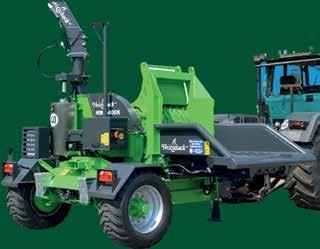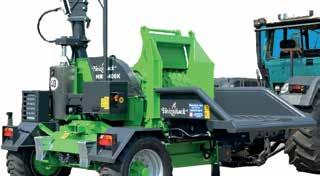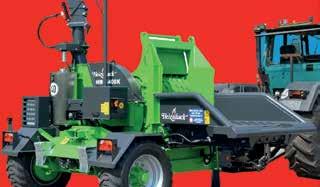
3 minute read
SMALL WOODLAND OWNER
A story from the past
The best loved Sunday School story in Wales is about Mary Jones who, as a 15-year-old girl in 1800, walked barefoot along the tracks and over the hills from her home at the foot of Cadair Idris to the town of Bala to buy a Bible. She had been saving up for at least six years and fi nally had enough money to set out on a very long day’s journey to go to the home of Rev. Thomas Charles to obtain the treasure she sought. I’ve known these details since childhood and a few weeks ago visited for the fi rst time the remote village of Llanfi hangel-y-pennant where the remains of the tiny cottage where Mary grew up with her mother (her father died when she was fi ve) are preserved and the story commemorated. In the picture you can see the memorial, and in the background a big beech, some sycamores and a patch of unthinned Scots pine and larch to the left.
My visit to what is left of Mary’s cottage set me thinking of what her surroundings would have been like 200+ years ago. And this was brought into sharp focus when reviewing for ICF’s Chartered Forester the fascinating book, Trees in England – management and disease since 1600 by Williamson, Barnes and Pillatt. (I apologise to myself and everyone else who is Welsh or of Welsh extraction for citing from a book entitled, ‘Trees in England’, but the silvicultural parallels are surely there!).
What Willamson et al do so well through their detailed and exhaustive research of estate records, archives, maps and contemporary accounts is to show how widespread both coppicing and pollarding used to be in the 17th and 18th Centuries. Every fi eld would have many hedgerow trees that were regularly pollarded for sticks and fuel - by ‘many’ I mean around 20 per hectare. Every hedgerow would be full of pollards to the point of complaints from farmers that their crops were shaded and interfered with. Indeed, around three-quarters of all trees on farms were pollards. From the 1780s, the authors relate how a decline began and such trees were lost from farms and timber production, limited as it was, was gradually transferred to the new plantations that began to be established.
Often in this piece I have urged readers to get to
know their woodland’s silvicultural history, to take time to learn how what we have today has come about. I wonder how many surviving hedgerow pollards still display their now long-since deceased use? Huge multibranched crowns emanating from two or three metres above ground is one giveaway.
But back to Mary Jones: I am sure her scenery would be very different from that of today. One of her jobs to earn a few farthings in saving up for a Bible was gathering fi rewood. And I must own up too: the Rev. Thomas Charles of Bala, to whom she went to buy a Bible, is my ancestor, my four greats grandfather. Today, you can have lovely coffee and Welsh cakes and visit a modern visitor centre, ‘Mary Jones World’, at the old St Bueno’s Church, Llanycil, just outside Bala. And you don’t have to walk 26 miles to get there.
I remains for me to wish readers Happy Christmas or perhaps I should say, Nadolig Llawen.


Biomass Wood ChippersBiomass Wood Chippers
► Class leading chippers producing G30, G50 & G100 fuel ► Low power requirement ► 300mm - 860mm capacity infeed diameter ► 3pt link, chassis mounted or lorry chipper options ► PTO, electric or engine drive options













